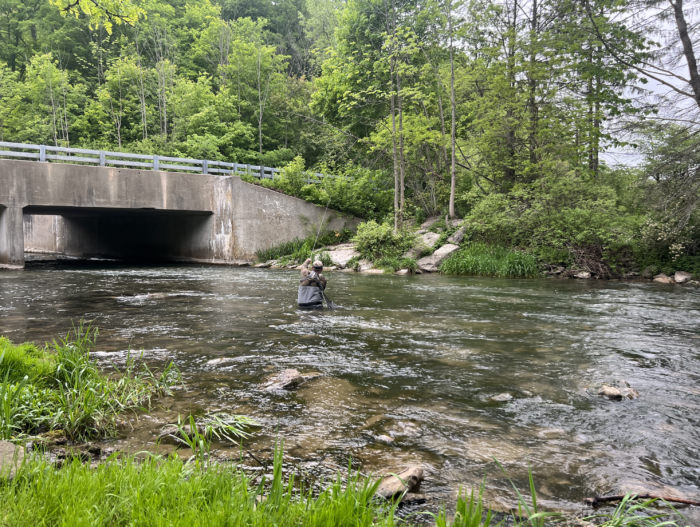
New York Regional Session One- Upper Nine Mile Creek
I just returned home from my first Team USA Regional event of the season in Central New York, and though I didn’t finish quite as high as I was hoping to, it was a great competition with a great group of anglers. We fished four venues on three rivers in the Syracuse area: Limestone creek, Butternut Creek, and the upper and lower sections of Nine Mile creek. The waters were low and clear but the fish were active and hungry.
I was lucky enough to be familiar with some of the venues from years of competing in the area and my time living nearby when I worked for Cortland Line. I was able to get up the week before the competition to pre-fish and check out some of the sections I hadn’t seen previously as well. This gave my team and I some time to prepare and tie the necessary flies before we met up in New York two days early to practice. We were all feeling ready by the time the competition rolled around.
I controlled (judged) the first session, which is my favorite way to start because I get to see which beats are producing and what numbers to expect before I fish. My angler landed twenty two fish and touched about thirty total, so I knew I needed to be at least in the mid twenties to have a shot at taking a one. From what we saw in practice and what I knew about the river, I was confident I could make something happen.
The draw put me on beat six, the lowest beat on the venue. It’s a popular section that I luckily knew very well. It began at an old railroad bridge and continued up about two hundred and fifty yards through some braids. It contained a few large holes that are heavily stocked and fished by locals and a variety of other decent water that I expected to be less pressured and more productive. In the first session it had only put up fourteen fish, but I knew it had a lot more to give than that.

After walking the beat I rigged up a T&T Contact II 10’9” 2wt with a micro leader of 0.18mm tricolored Sempe material. The biggest thing we noticed about the fish on Nine Mile in practice was that they wanted the flies drifted slow and deep. This was unusual for the time of year and led us to fish heavier flies and longer tippets than normal for the flows. Knowing that, I added about four feet of 6x Cortland tippet off my leader using a stopper knot and a single #14 3.5mm copper beaded tag nymph that had worked well for me in practice. When the buzzer rang I began casting into the ledge that runs right in front of the bridge. This area was usually good for a fish or two but I didn’t touch anything. I worked through it quickly and moved into the deeper run above.
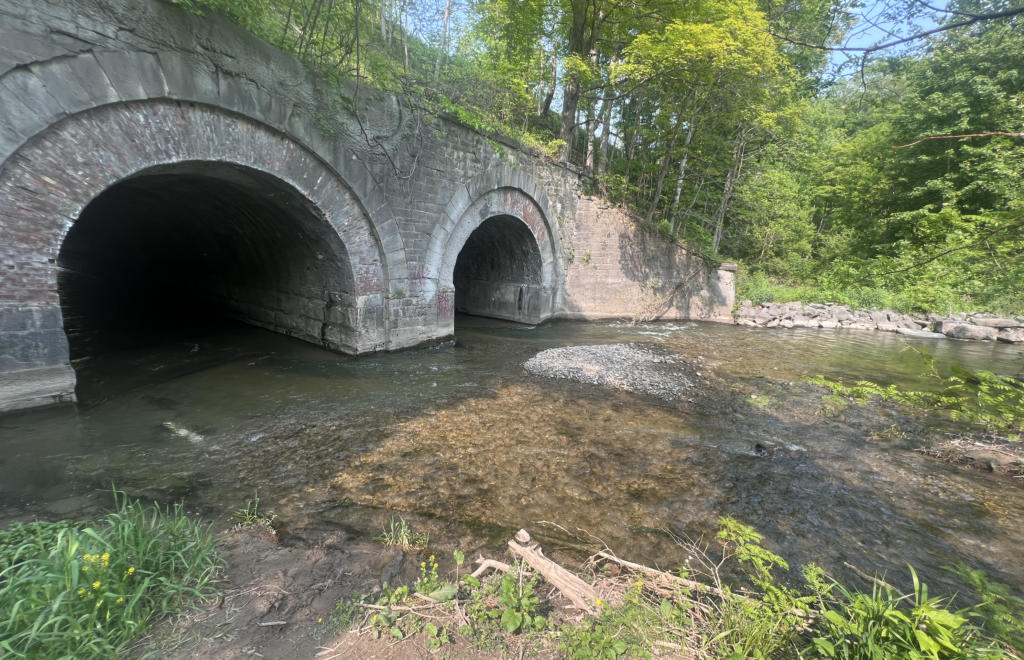
I made an upstream cast into the tail of the run and immediately had a small strike. On the next cast I landed a small wild brown that proved to be a few millimeters too short. I repeated this a few more times while moving up until I finally landed a fish that was big enough to score. It was small but I was at least on the board only a few minutes into the session. After that, the action dried up on the nymph and I gave it a few drifts with a 4mm cream colored mop. It had been killer in practice for picking up a few extra fish, but nothing seemed interested now.
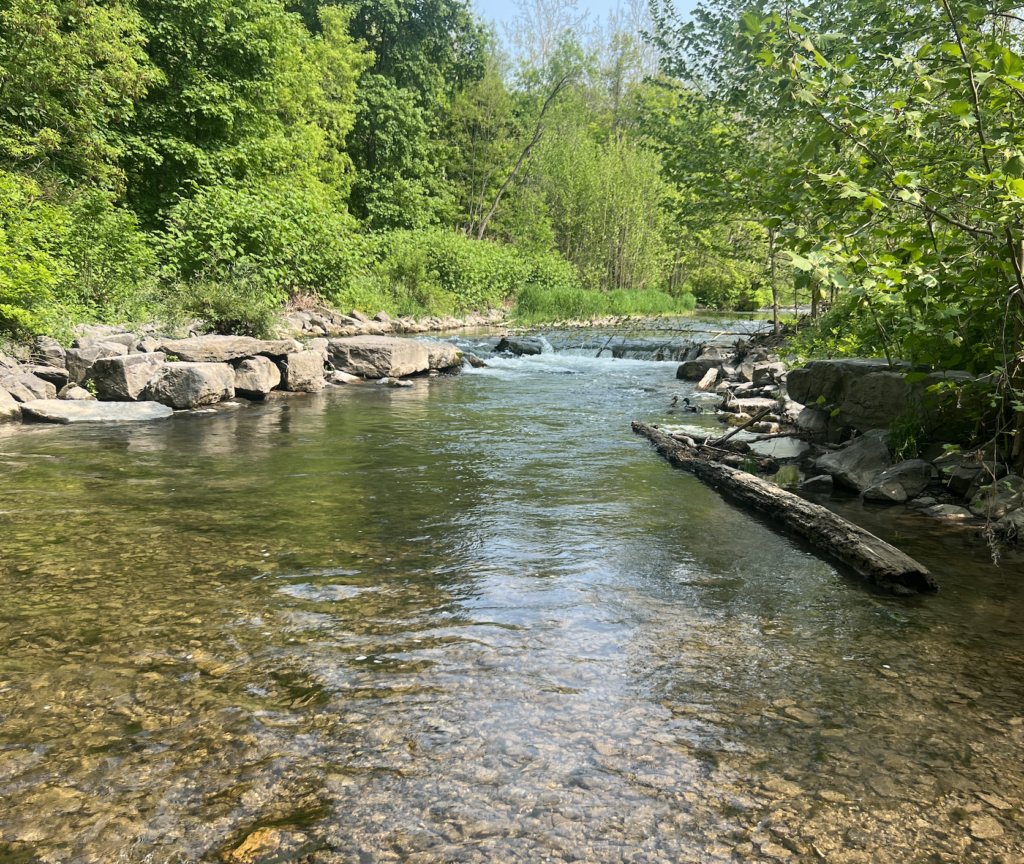
I hurried up to the next good hole, making just a few casts on the way. This was definitely the most pressured water on my beat as it looks great and is right next to the trail in. I decided to fish it from the left bank, the opposite of what most people do, to try and get a more unique presentation. Once I was in a good position at the head of the pool I switched to a #16 3.5mm copper beaded pheasant tail. I made a few casts right to where the river braids met below the island and landed a solid forty centimeter wild brown on a slow slack drift. Over the next ten minutes I landed and missed a few more fish doing this and then switched back to the cream mop when the action dried up. This got me another two fish but quickly stopped producing. I finally tied on a 4mm tag nymph to slow the drift even more and pulled one more big stocked brown from the heart of the hole.
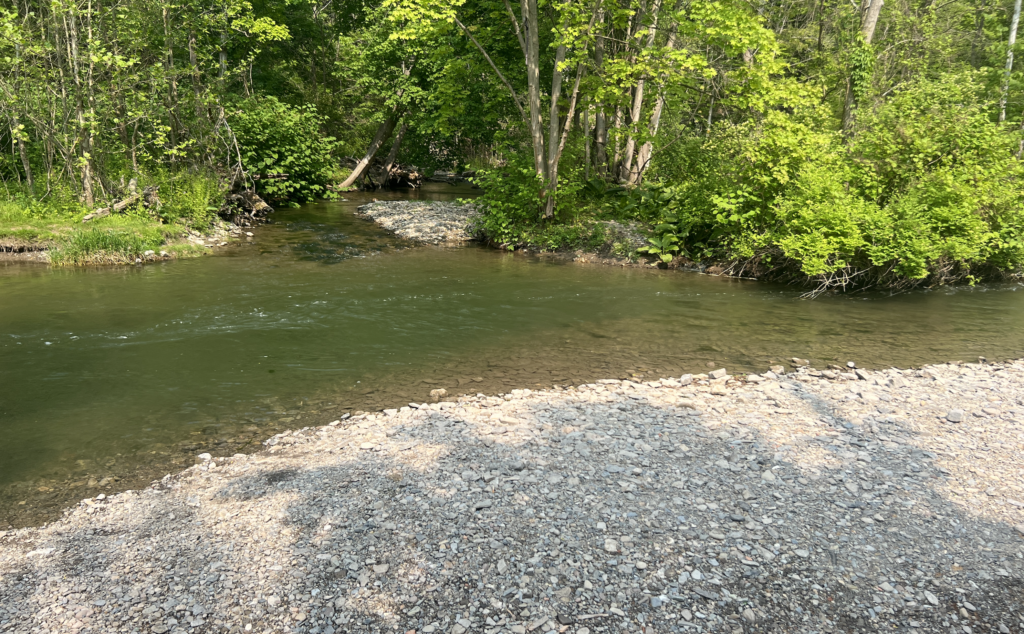
When that spot stopped producing I crossed back over at the tailout. I made a few casts with a #14 3.5mm copper beaded pheasant tail under the bushes at the head of the run on my way up, where I hooked and lost a decent wild rainbow. Further upstream the creek braids more and leaves only one tight channel deep enough to fish. I expected maybe one or two small fish from it, but when I made my first cast directly upstream into the best looking part of it I immediately came away with a decent brown. The next cast produced a similar fish, so I decided to run around to the island to fish it from a better angle off the bank. I caught five more fish here on the pheasant tail and one more on a 4mm tag nymph for a total of eight fish from this relatively small depression.
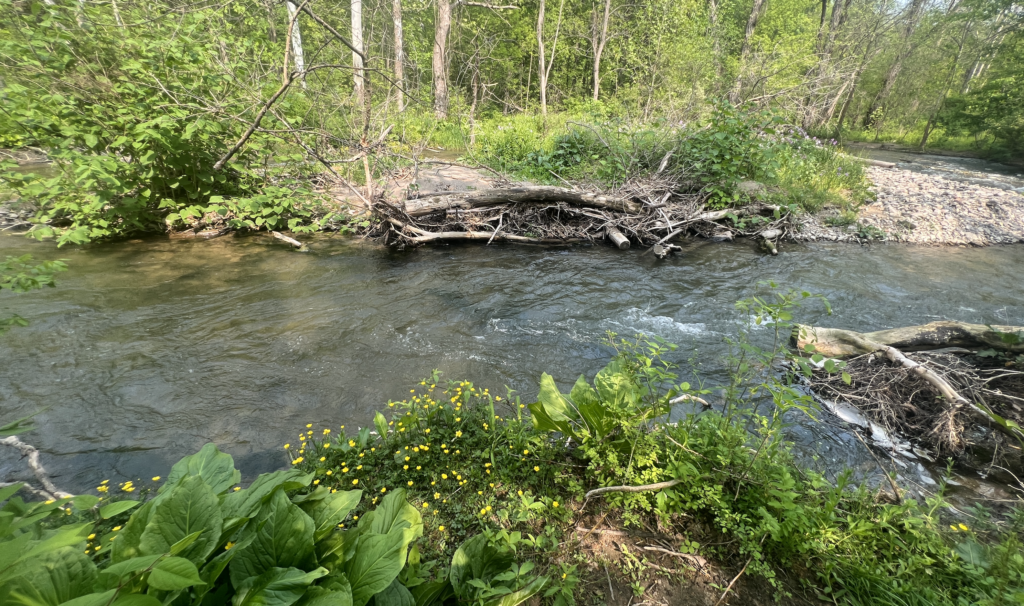
I caught one more fish from the top of the channel on my way to the next pool. This pool looked good but from prior experience I knew it had some very tricky hydraulics that made it hard for fish to hold there and even harder to get a good drift. After running my nymph through it a few times with no love I switched back to the cream mop. I quickly missed one and then caught one jigging it in the slack water on the near side of the run. It was taking a bit more effort to catch fish from this water than I thought was worth it for the conditions, so I started moving on after only about ten minutes. On the way out I made an errant cast to the head of the pool that resulted in a bonus fish I wasn’t expecting.

I caught a few more fish from likely pockets and small runs in the long stretch of mediocre water preceding the next decent hole, all on a #14 3.5mm silver pheasant tail. My next good spot was a heavy run that flowed under a low hanging tree. I approached it on my knees to make casting under the tree a bit more manageable. Based on where I’d caught my previous fish I expected it to hold good numbers, so I was pretty disappointed after wasting about seven minutes for one scorable fish and two shorts. I switched to the same fly with a 4mm bead as a last ditch attempt and landed one more barely scorable wild brown.
Right above this run there was a larger pool with good flow and a big logjam in the middle. I stayed low, waded to the mid section, and quickly landed a few fish. I stayed here for a while and cycled through the mop, tag nymph, and pheasant tail in different sizes until the action went stale. Then I moved to the top of the hole above the logjam, where I missed one and landed one on a 3.5mm pheasant tail. I decided to move on without cycling through other patterns, which is a decision I came to regret a bit by the end of my session. The next fifty yards of my beat to the top was fairly featureless, containing just a few small depressions. I fished it fairly fast and had no action to speak of. With around twenty five minutes left I decided to run down to the channel where I landed eight and fish up the rest of the beat again from there. I hoped that I had rested the water enough for a few fish to become active again.
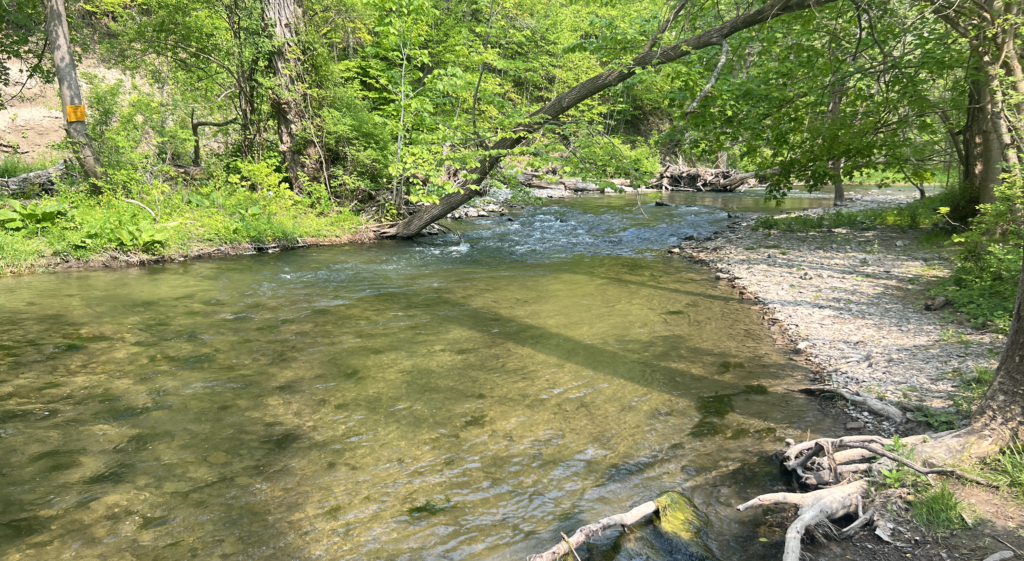
I tried a few different pheasant tail and tag nymph variations in the channel, but if there were any more fish left I couldn’t convince them to eat. After a few futile minutes there I moved back to the pool with odd hydraulics and put on a #12 4mm brown turd stone. I ran it through a few times and lost one fish as it swung up on the end of the drift. I tied on a 4mm chartreuse mop and had a few eats I didn’t convert. A final long cast up to the top of the pool instantly resulted in a small brown on the end of my line. I popped it straight into the air, netted it, got it scored and continued on.
By this point in the day there were a number of other anglers in my beat fishing for fun. I had to skip all the water above the pool and head straight for the run under the tree. I gave it just a few unsuccessful casts with the chartreuse mop and then ran up to spend my last five minutes in the logjam pool. A large stocked brown ate on my first cast below the logs, but as I was scoring it an angler walked in and started fishing a centerpin right above me. I was hoping to move on to this area for the last two or three minutes since I didn’t cover it well on the first pass, but with anglers above and below me I was stuck fishing the same place until the end. No more trout hit the net in the final few minutes, but I ended the session with a respectable twenty five fish.
I knew this finish would do me fairly well. When I met up with the other anglers most of the numbers were in the mid to high teens, with one angler catching twenty seven. I figured that I took second for the session, however when the scores came out it turned out I actually managed first. My fish were all large enough that I surpassed the other angler in fish points with less total fish, which has only happened to me one other time. I certainly won’t complain about it! The next day this beat put up twenty two fish in the first session and only eleven in the second, so I feel pretty good about my finish here. Next up is the lower Nine Mile venue, where I had a pretty insane beat that I’m sure you’ll want to hear about.
** For more information on Team USA Fly Fishing, visit their website here. If your interested in getting your feet wet (pun intended) in competitive fly fishing, you can find a list of upcoming competitions on Flycomps.com.**
